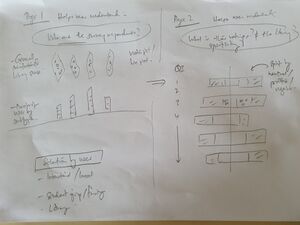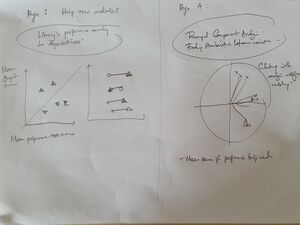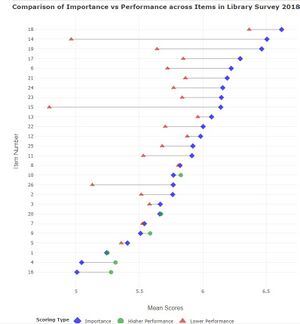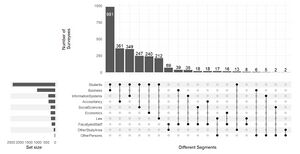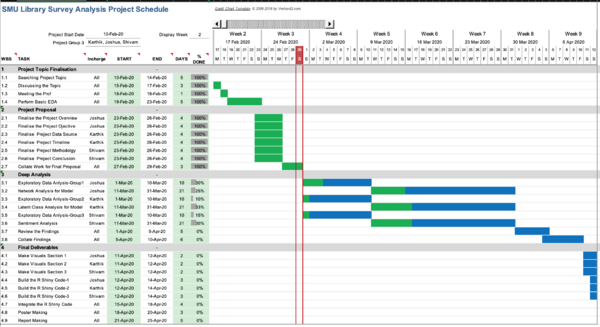Difference between revisions of "Group03 proposal"
| Line 2: | Line 2: | ||
<div> | <div> | ||
{|style="background-color:#f2d08e;" width="100%" cellspacing="0" cellpadding="0" valign="top" border="0" | | {|style="background-color:#f2d08e;" width="100%" cellspacing="0" cellpadding="0" valign="top" border="0" | | ||
| − | | style="font-family:Arial; font-size:100%; solid #103080; background:# | + | | style="font-family:Arial; font-size:100%; solid #103080; background:#C69200; text-align:center;" width="20%" | |
; | ; | ||
| − | [[Group03_proposal| <font color="# | + | [[Group03_proposal| <font color="#151C55">Proposal</font>]] |
| style="font-family:Arial; font-size:100%; solid #103080; background:#151C55; text-align:center;" width="20%" | | | style="font-family:Arial; font-size:100%; solid #103080; background:#151C55; text-align:center;" width="20%" | | ||
Revision as of 15:02, 25 April 2020
Contents
Overview/Motivation
Singapore Management University (SMU) has 2 physical libraries – the Li Ka Shing Library and Kua Geok Chee Library, which aim to give access to wide range of information to drive intellectual exchange and creation of new knowledge in our world. Every 2 years, the SMU library will conduct a user survey of faculty, staff and students to collect information to gauge its performance in providing library services to the community, based on 4 categories of assessment:
- Communication
- Service delivery
- Facilities and equipment
- Information resources
Current reports generated from responses from the Library Survey in 2018 are mainly displays of survey responses with highlighting of what library users consider as most important, with aggregate statistical results generated, but we feel there is potential for more insight to be discovered from the data.
Our project hopes to create a R Shiny application in order to revisit and uncover insights from Singapore Management University (SMU) Library Survey 2018 data to uncover insights in the perception of importance of aspects of library services and facilities, as well as the library performance based on these matrices, based on inputs from faculty, staff and students. As the survey questions are being reused for the SMU Library Survey 2020, there is potential for re-use of the R Shiny application for this year.
Project Objectives
Using the SMU Library Survey 2018 Dataset, we hope to:
- Use generate meaningful insights beyond aggregated statistical data and uncovering the factors considered important by library users.
- Understand the sentiments of members of the SMU community who have participated in the survey.
- Understand how the library is performing on individual survey items according to the importance placed on these items by survey participants.
- Determine relationships between factors used to benchmark performance and provision of library facilities.
Data Source & Inspiration References
The SMU Library Survey 2018 data was obtained courtesy of the SMU library management and staff. Survey responses were obtained from a total of 2639 participants, including staff, faculty and students, capturing their demographics, as well as ratings of the importance of pre-defined factors and indicators, and their assessment of the performance library on them. Free text information in the form of comments were also collected to supplement their assessment of the library through pre-determined matrices and suggest recommendations for improvement of the library.
Proposed Story/Dashboard
Libraries typically develop surveys for 3 reasons: to gauge user satisfaction, to assess users' needs (usage), or to learn more about whether the library has met the outcomes of visiting the library. Our project application is designed for Singapore Management University's management and library staff in mind to derive insights into their performance so that they can invest resources into meeting the library users' needs in the future, through strategy or changes in operation.
Specifically, the following information should be uncovered: - Breakdown of the survey respondents by their background through the Complex UpSet Plot - Understanding the sentiments of respondents using Diverging Stacked Bar Charts - Assessing whether the rated performance by library users have met with their expectations and which sectors the library can improve through Dumbbell plot - Analyzing possible relationships and explanations for survey item ratings through Principal Components Analysis
Our storyboard drafts below shows the design thinking and user journey through each page of the application where the user gradually gets fuller understand of trends in the survey data.
Through the journey, we hope to answer these questions which come up in the SMU library staff/management's mind.
- Who are the survey respondents, and where are they from?
- What is their general sentiment for different survey items?
- How is the library performing (based on ratings by users) for the different categories which the library is assessed to perform?
- Are there any relationship between factors which can lead me to develop new insights to improve the operation and strategy for running the library?
Data Preparation
- Data was analysed and deemed to be adequately clean for use in the R Shiny application.
- Data manipulation for use in the Shiny application is written into code and this allows future loading of survey results for year 2020 to be uploaded directly for instance analysis of data.
Analysis of Survey
- This will be through the use of diverging stacked bar charts, UpSet plots, Dumbbell plots, heats maps and principal components analysis.
- We are also considering use of topic modelling and/or sentiment analysis for free-text survey comments data.
Visualizations
The following are sample visualizations for the R Shiny application:
Implementation
Implementation of data visualization and analysis tool is through the use of R Shiny application to provide vizualisations based on user options on subsets of data which they would like to look into.
Project Timeline
Please refer to the Gantt chart for the detailed breakdown of work and tentative planned schedule to achieve the project milestone.
Data Description
| S.No. | Data Field | Description | Data Type |
|---|---|---|---|
| 1 | ResponseID | Identity of the respondent | Numeric |
| 2 | Campus | Name of the Library which survey respondent visits more frequently | Categorical |
| 3 | Position | Designation of respondent (e.g. undergraduate student or faculty) | Categorical |
| 4 | StudyArea | Major area of study, research or teaching | Categorical |
| 5 | ID | Whether the surveyor is on international exchange | Categorical |
| 6 | I01-I26 | Survey Questions asking for respondents to rate the importance of individual items | Ordinal |
| 7 | P01-P26 | Survey Questions asking for respondents to rate the performance of the library of corresponding items | Ordinal |
| 8 | Comment1 | Suggestions for improvement or any other comments about library services | String |
| 9 | HowOftenL | How frequently the library is visited by respondent (e.g. daily, weekly, monthly) | Ordinal |
| 10 | HowOftenC | How frequently the campus is visited by respondent (e.g. daily, weekly, monthly) | Ordinal |
| 11 | HowOftenW | How frequently the library resources are accessed (e.g. daily, weekly, monthly) | Ordinal |
| 12 | NA01-NA26 | Data obtained where responses captured were that items were 'Not Applicable' for them | Ordinal |
| 13 | NPS1 | The likelihood that the respondent will recommend the library's services to others | Ordinal |
| 14 | PS27 | Overall satisfaction of the respondent with the library's services | Ordinal |
Tools & Packages
Tools used - Rstudio: https://rstudio.com/
| S.No. | Packages | Purpose |
|---|---|---|
| 1 | shiny() | Package for creating the R shiny interface |
| 2 | topicmodels() | Package for Topic Modelling |
| 3 | ggplot2() | Package for creating the Charts & Visualization |
| 4 | dplyr() | Package for Data Manipulation |
| 5 | sentimentanalysis() | Package for Performing Sentiment Analysis on Remarks |
| 6 | wordcloud() | Package for creating Word Clouds |
Members – Milestones
Joshua LAM
- UpSetR Plot exploratory data analysis
- Dumbbell Plots for performance-importance comparisons
Karthik NITYANAND
- Exploratory Data Analysis
- Latent Class Analysis
Shreyansh SHIVAM
- Exploratory Data Analysis
- Topic Modelling
